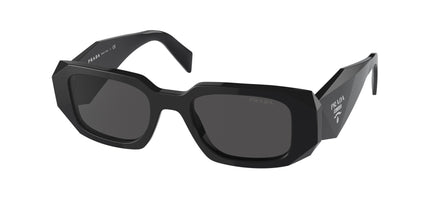What is Color Blindness?

Let's chat about color blindness. While it's not life-threatening, it's certainly a perplexing condition that can mess with how you see colors daily, especially when it comes to eyewear and fashion. If you've ever struggled to match outfits or colors seem off, you might be dealing with color blindness. Don't worry—you're not alone. This blog will break down the different types of color vision deficiency, explain how it affects everyday life, and share some easy ways to manage it so you can feel confident in your style choices.
Understanding Color Blindness
So, what exactly is color blindness? Simply put, it's a vision issue where you can't see colors the way most people do. It's usually genetic (thanks, family genes) and affects more men than women because it's linked to the X chromosome. For some folks, it pops up later in life due to eye injuries or just getting older. If you're color blind, you probably can't tell certain colors apart, like reds and greens or blues and yellows, making them look like dull or similar shades.
Contrary to popular belief, being color blind doesn't mean you see the world in black and white. Instead, most people with color blindness can still see some colors, but their spectrum is limited. The rarest type, complete color blindness (achromatopsia), involves seeing everything in black, white, and gray, but that's extremely uncommon.
Types of Color Blindness
-
Red-Green Color Blindness
By far the most common type, red-green color blindness is made up of two varieties:
-
Protanopia: If you're missing the red cone cells in your eyes, you'll have a hard time distinguishing between reds and greens, and the world will appear mostly in dull blues and greens.
-
Deuteranopia: Here, the problem is with green cone cells, so telling apart greens, yellows, and reds becomes a challenge.

These variations are grouped as red-green color deficiencies and affect how you see colors across the board.
-
Blue-Yellow Color Blindness
Blue-yellow color blindness, or Tritanopia, is much rarer but still a challenge. If you're missing the blue cone cells, blues and greens start to blend together, and yellow might look more like gray or violet.

-
Complete Color Blindness (Achromatopsia)
Complete color blindness, or achromatopsia, is when you can't see any colors at all. You'd see the world in shades of gray, and bright light would feel super intense. It's rare, but those who have it often rely heavily on patterns and textures to navigate.

Identifying Color Vision Deficiency and Its Effects
Think you might be color blind or know someone who is? Here are a few symptoms to keep an eye out for:
-
Difficulty telling certain colors apart, especially red, green, blue, and yellow.
-
Picking clothing items that don't match or often look strange together.
-
Challenges in recognizing signals or maps that rely on color coding.
-
Even mistaking food based on color—like mixing up mustard and ketchup—or smelling food before eating
Want to know for sure? Online color blindness tests can give you a basic idea, but seeing an optometrist for a proper diagnosis is best. The Ishihara Test is one of the most popular, with plates of multicolored dots that form patterns visible only to those with normal color vision. There are also other matching tasks and equipment that can measure your color perception.
Impact on Daily Life
-
Challenges in Fashion
One of the trickiest parts of color blindness is picking out matching clothes. What you think is a stylish outfit might look totally mismatched because it's tough to distinguish colors. It can be nerve-wracking to coordinate your wardrobe, leading many to stick with neutral colors or ask friends for help.
When choosing eyewear, it's the same struggle. Picking frames that work with your skin tone and outfits can be overwhelming, so many opt for neutral-colored frames.
-
Workplace Implications
If your job relies heavily on distinguishing colors, like graphic design or electrical work, color blindness can pose real problems. Mistakes can happen if you mix up wires or misread colors. Finding the right eyewear or tech tools can help, but it's essential to find a balance that works for you.
-
Social and Emotional Effects
Missing visual cues in social settings can make people feel awkward or out of place. Confusing someone's outfit color or not picking up on color-based signals can chip away at your confidence. Some people may also feel left out of colorful experiences like art exhibits or fashion events. But don't sweat it—solutions like special eyewear and supportive friends can make a huge difference.
Solutions and Coping Strategies
-
Specialized Glasses
Specialized glasses have come a long way in helping those with color blindness. Brands like EnChroma have created lenses that filter light and enhance color perception. While they're not a cure-all, they can help distinguish shades and make daily tasks like picking clothes much easier.
-
Tech Tools and Apps
Your smartphone can be your best friend in identifying colors. Apps like Color Grab and Color Blind Pal use your camera to detect colors and even suggest matching shades for your outfits. Plus, desktop tools offer color-blind-friendly palettes if you're into graphic design.
-
Coping with Clothing Choices
Keeping your closet organized can save you a lot of frustration:
-
Start with neutral colors as a base for your wardrobe.
-
Label your clothes with colors or arrange your closet by outfits that work together.
-
Use apps to help identify color combinations before stepping out.
These simple tips can help you look stylish and feel confident without second-guessing your choices.
-
Professional Support
Optometrists and ophthalmologists can offer excellent advice on vision therapy and other strategies. They provide specialized eyewear, exercises, and techniques that make daily life easier. A proper eye exam will help identify your type and severity of color blindness so you can find the right solutions.
Painting a Brighter Perspective
Being color blind can make things challenging when picking out clothes or eyewear, but it doesn't have to hold you back. By understanding the different types, identifying the impact on daily life, and learning about handy solutions like specialized glasses and tech tools, you can confidently navigate the world. Make sure to get an eye care professional's input—they'll help you find the best strategies for your unique needs. Whether it's with color-correcting eyewear or organizing your wardrobe, you'll be able to see the world in your own colorful way.















 Back to Blog Page
Back to Blog Page











